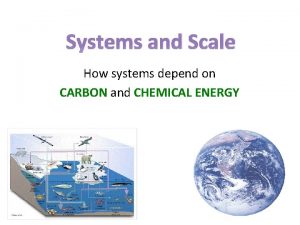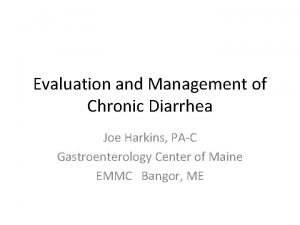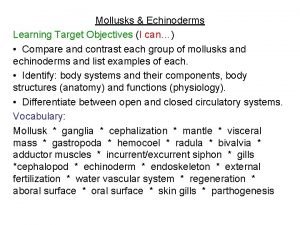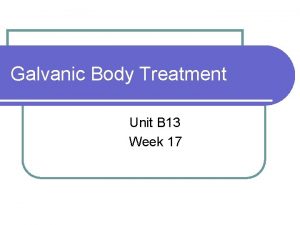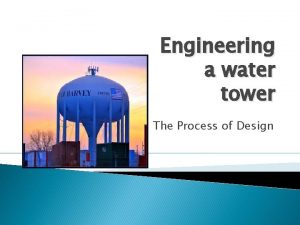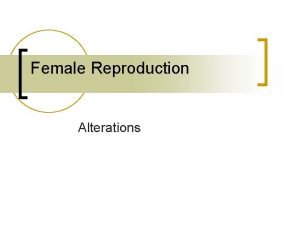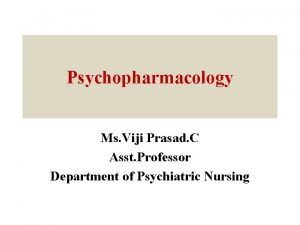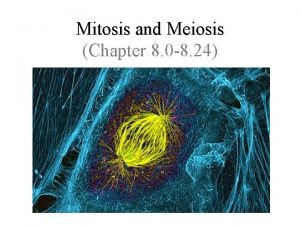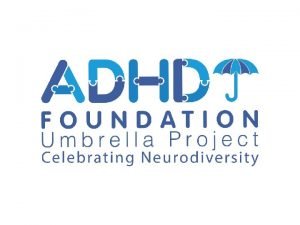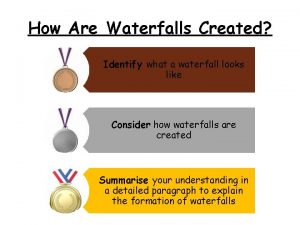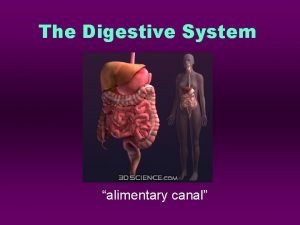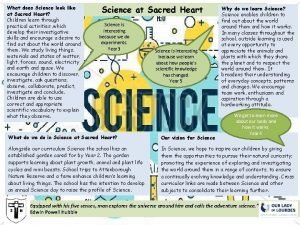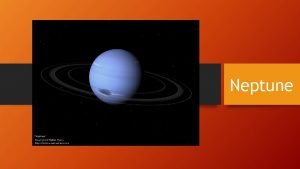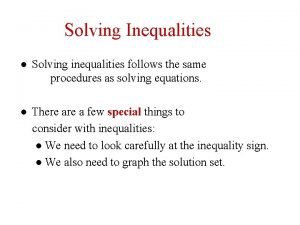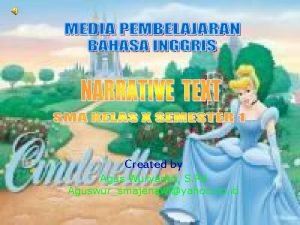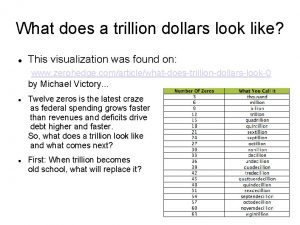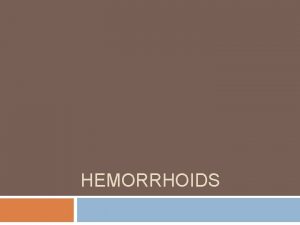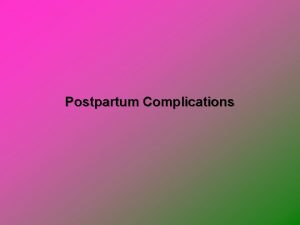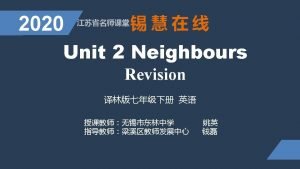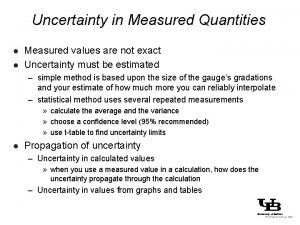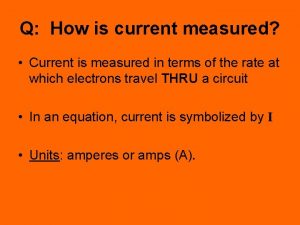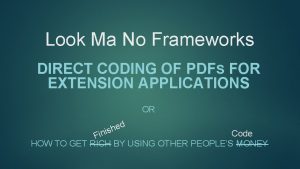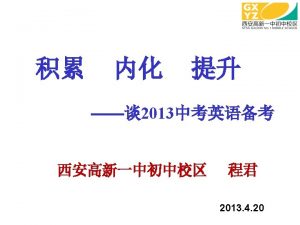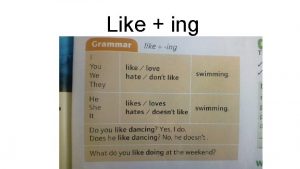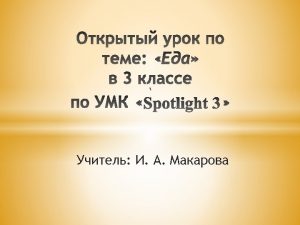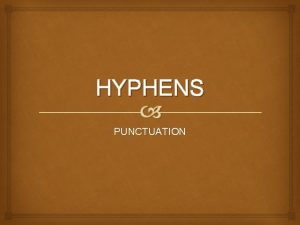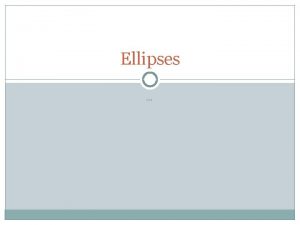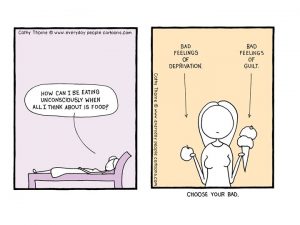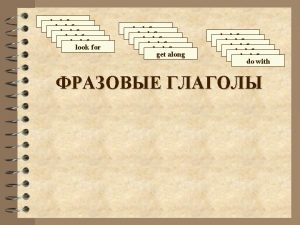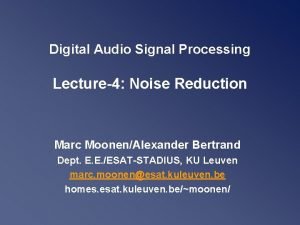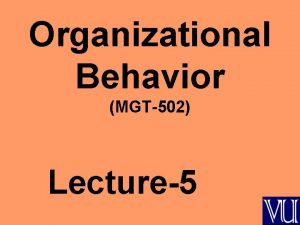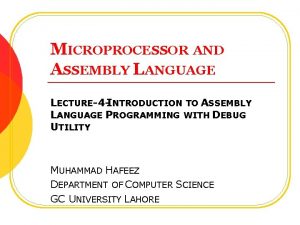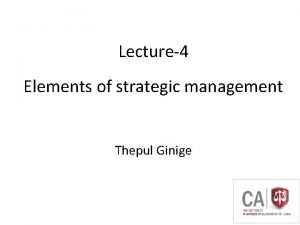Lecture4 This is what PDFs look like measured





























- Slides: 29

Lecture-4 This is what PDFs look like– measured not theoretical (2008) What do the errors mean? Some are directly from experimental error Some are due to assumptions– let’s first consider assumptions. . Amanda Cooper-Sarkar – QCD Prof. Amanda Cooper-Sarkar – QCD 1

Progress made over 20 years of PDF fitting ( thanks to Wu-ki Tung) Fixed-tgt # Expt pts. HERA DY-W Jets Total 1070 484 145 123 1822 EHLQ ‘ 84 11475 7750 2373 331 21929 Du. Ow ‘ 84 8308 5005 1599 275 15187 Mo. Tu ~‘ 90 3551 3707 857 218 8333 KMRS ~‘ 90 1815 7709 577 280 10381 CTQ 2 M ~’ 94 1531 1241 646 224 3642 MRSA ~’ 94 1590 983 249 231 3054 GRV 94 ~’ 94 1497 3779 302 213 5791 CTQ 4 M ~’ 98 1414 666 227 206 2513 MRS 98 ~’ 98 1398 659 111 227 2396 CTQ 6 M 1239 508 159 123 2029 1378 530 120 236 2264 02 MRST 01/2 Alekhin’ 03 Amanda Cooper-Sarkar – QCD Prof. Amanda Cooper-Sarkar – QCD 1576 572 892 270 3309 2

The u-quark 1984 looks rather different than the u-quark 2004 Why? Obviously experiment has contributed HERA data has shown us that at low-x the gluon rises very steeply and generates a steep behaviour in the quarks. . (lecture 6) But there has also been development in relaxing assumptions Amanda Cooper-Sarkar – QCD Prof. Amanda Cooper-Sarkar – QCD 3

Model Assumptions • The mathematical form of the parameterisation (The NNPDF use a neural net to learn the shape of the data rather than imposing a specific form of parameterisation) • For Q 2 >> Q 02 this gets “washed out” provided it’s reasonable… • Value of Q 02 • No longer assume: • , • as in early work independent of x, bu = bd • Or impose values on these parameters like Where did these prejudices from? - Regge theory and counting rules Amanda Cooper-Sarkar – QCD Prof. Amanda Cooper-Sarkar – QCD 4

• We now know that, Rather than (ubar+dbar)/2 (from neutrino dimuons – maybe!) • Charm sea generated by Boson Gluon Fusion (BGF) • We still assume: • dproton = uneutron • uproton = dneutron • Amanda Cooper-Sarkar – QCD Prof. Amanda Cooper-Sarkar – QCD MRST QED 2004 challenges this Maybe not for strange sector? 5

Flavour structure Historically an SU(3) symmetric sea was assumed u=uv+usea, d=dv+dsea usea= ubar = dsea = dbar = sbar =K and c=cbar=0 Measurements of F 2μn = uv + 4 dv +4/3 K F 2μp 4 uv+ dv +4/3 K Establish no valence quarks at small-x because F 2μn/F 2μp → 1 But F 2μn/F 2μp → 1/4 as x → 1 Not to 2/3 as it would for dv/uv=1/2, hence it look s as if dv/uv → 0 as x → 1 i. e the dv momentum distribution is softer than that of uv. Why? Non-perturbative physics --diquark structures? How accurate is this? Could dv/uv → 1/4 (Farrar and Jackson)? Amanda Cooper-Sarkar – QCD Prof. Amanda Cooper-Sarkar – QCD 6

Since we are in Jlab I should devote a little more time to this. The d-quark is often determined from deuterium targets by using the assumption d in proton = u in neutron (u’s have larger charge-larger coupling). But that is not the most dramatic assumption. You have to know the corrections from bound deuterium to a (p+n)/2 isoscalar target CJ PDFs relax the cuts usually made on low-Q 2 /high-x data which exclude the region sensitive to higher twists, target mass corrections, deuterium corrections and then make estimates of these corrections. The improvement in statistics at high-x more than compensates for the uncertainty on these corrections. More recent CJ 15 analysis has used new data from Tevatron lepton asymmetry data And Jlab data from BONu. S on F 2 n/F 2 D Amanda Cooper-Sarkar – QCD Prof. Amanda Cooper-Sarkar – QCD 7

Flavour structure in the sea dbar in the sea Consider the Gottfried sum-rule (at LO) ∫ dx (F 2 p-F 2 n) = 1/3 ∫dx (uv-dv) +2/3∫dx(ubar-dbar) If ubar= then the sum should be 0. 33 the measured value from NMC = 0. 235 ± 0. 026 Clearly dbar …why? low Q 2 non-perturbative effects, sbar≠(ubar n in fact sbar ~ (ubar+ (MAYBE!) m- Shape information comes from Drell-Yan data pp and p. D Pauli blocking, p →nπ+, pπ0, Δ++πW+ c→s μ+� s Why? The mass of the strange quark is larger than that of the light quarks Evidence – neutrino opposite sign dimuon production rates And even s≠sb ? Because of p→ΛK+ Amanda Cooper-Sarkar – QCD Prof. Amanda Cooper-Sarkar – QCD 8

What is the ratio of the strange parton distribution to the light quark PDFs? μ- ν W+ s c s μ+ ν Nobody really knows. It appears suppressed at high-x , x> 0. 05 But not necessarily at lower x We had a traditional view that rs(x)=sbar/dbar ~0. 5. Why? Because of neutrino opposite-sign dimuon data (Nu. Te. V, now CHORUS, NOMAD) But this has been fed into fits CT, NNPDF, MMHT and look at the large discrepancies! The neutrino only provides any information for x~0. 1, plus it needs nuclear target corrections, plus it needs understanding of the s →c threshold transition- and of the progress of the charm particle through the nuclear medium 9 Amanda Cooper-Sarkar – QCD Prof. Amanda Cooper-Sarkar – QCD 9

BUT Is the strangeness sector even charge symmetric? - is the cause of the Nu. Te. V sin 2θW anomaly? • CTEQ say that current global analysis does not require a non-zero xs-(x)= x(ssbar) Its value is in the range MRST say there is an asymmetry <xs-(x)> =0. 0028± 0. 0012 At 90%CL They also give a range of possible shapes. s-(x) . But this is a very small effect x s-(x) Amanda Cooper-Sarkar – QCD Prof. Amanda Cooper-Sarkar – QCD 10

Is it true that u in proton = d in neutron NOT if QED corrections are incorporated in the analysis- is the cause of the Nu. Te. V sin 2θW anomaly? And this is an even smaller effect Amanda Cooper-Sarkar – QCD Prof. Amanda Cooper-Sarkar – QCD 11

Heavy quark treatment – illustrate with charm Massive quarks introduce another scale into the process, the approximation mq 2~0 cannot be used Zero Mass Variable Flavour Number Schemes (ZMVFNs) traditional c=0 until Q 2 ~4 mc 2, then charm quark is generated by g→ c cbar splitting and treated as massless-- disadvantage incorrect to ignore mc near threshold Fixed Flavour Number Schemes (FFNs) If W 2 > 4 mc 2 then c cbar can be produced by boson-gluon fusion and this can be properly calculated - disadvantage ln(Q 2/mc 2) terms in the cross-section can become large- charm is never considered part of the proton however high the scale is. General Mass variable Flavour Schemes (GMVFNs) Combine correct threshold treatment with resummation of ln(Q 2/mc 2) terms into the definition of a charm quark density at large Q 2 Arguments as to correct implementation but should look like FFN at low scale and like ZMVFN at high scale. Additional complications for W exchange s→c threshold. Amanda Cooper-Sarkar – QCD Prof. Amanda Cooper-Sarkar – QCD 12

Heavy quarks Heavy quark distributions in fits are dynamically generated from g→c cbar Results depend on the “scheme” chosen to handle heavy quark effects in p. QCD–fixed-flavor-number (FFN) vs. variable-flavor-number (VFN) schemes – this has got worse lately ! There is more disagreement as more groups jump into the game. Going to NNLO should help Amanda Cooper-Sarkar – QCD Prof. Amanda Cooper-Sarkar – QCD 13

We’ve got a long way in agreeing on reasonable model assumptions But there is still room for choice: • Values of heavy quark masses– and even the heavy quark scheme • Value of αS(MZ 2) – or determine it in the fit • Values of Q 20 • Values of Q 2 min of the data – include low Q 2, low W 2 data or not? • The data sets included • Form of the parameterisation And there is also the matter of how you treat the experimental errors. . Amanda Cooper-Sarkar – QCD Prof. Amanda Cooper-Sarkar – QCD 14

The PDF fit results in a set of parameters p with errors. Now let’s talk about the experimental errors. The PDF shapes are functions F of these parameters so the errors on the PDFs: The cross sections / structure functions are more complex functions of the PDFs and their errors can be similarly evaluated. Two points: • PDF groups diagonalise Vjk and refer to PDF eigenvectors – which are just suitable combinations of parameters, Or you can use the asymmetric version adding up +ve and –ve deviations from the central predictions in quadrature separately – better when errors are non-Gaussian • For 68% CL error bands you would think that the tolerance , T=1, and similarly for 90%, T=2. 73, but this is NOT so for MSTW 2008 or CTEQ 6. 6 Amanda Cooper-Sarkar – QCD Prof. Amanda Cooper-Sarkar – QCD 15

. Some data sets incompatible/only marginally compatible? To illustrate: the χ2 for the MRST global fit is plotted versus the variation of a particular parameter (αs ). The individual χ2 e for each experiment is also plotted versus this parameter in the neighbourhood of the global minimum. Each experiment favours a different value of. αs PDF fitting is a compromise. Can one evaluate acceptable ranges of the parameter value with respect to the individual experiments? Amanda Cooper-Sarkar – QCD Prof. Amanda Cooper-Sarkar – QCD 16

How far away from the central fit can you go and still fit each data set within 90% (or 68%) CL? Tolerance No further than this HI/Zeus data determine the limit on the eigenvector E 866/Nu. Te. V data determine the limit on this one Amanda Cooper-Sarkar – QCD Prof. Amanda Cooper-Sarkar – QCD 17

Summary of which eigenvectors are determined by which data sets. 68% CL has a tolerance T = 4 – 5 90% CL has a tolerance T = 7 – 8 Which means Relax, you can use the PDF sets in LHA PDF as a Δx 2 = 20 - 68% “black box” – it is all done for you. = 50 - 90% Amanda Cooper-Sarkar – QCD Prof. Amanda Cooper-Sarkar – QCD 18

Now let’s consider the measurement of αS(MZ 2) and the gluon PDF Ways to measure αS(MZ 2): • For non-singlet (valence) quark distributions, There is no contribution to evolution from the gluon. Thus the evolution of a non-singlet structure function, Ø Like x. F 3 in ν, ν N Ø or x. F 3 in e±p at high Q 2 via Z 0 exchange Can directly measure αS with the smallest number of assumptions. Unfortunately it also has the largest experimental difficulty Amanda Cooper-Sarkar – QCD Prof. Amanda Cooper-Sarkar – QCD 19

• More usually the scaling violations of the singlet structure function have to be used so that the determination of αS(MZ 2) is coupled to the gluon shape determination. Increasing αS increases the negative contribution from Pqq term, but this can be compensated by the positive contribution from Pqg term if the gluon is made harder. αS(MZ 2) increases → gluon harder So, αS(MZ 2) = 0. 115 and may give a similar χ2 to αS(MZ 2) = 0. 118 and Amanda Cooper-Sarkar – QCD Prof. Amanda Cooper-Sarkar – QCD αS is determined in the same global fits which determine PDF parameters → Fortunately there are now so many data points now that there are limits to this freedom. 20

Many PDFs use a fixed value of αS(MZ) (CTEQ, NNPDF, HERAPDF, . . Amanda Cooper-Sarkar – QCD Prof. Amanda Cooper-Sarkar – QCD Look what happens when you free it. . 21

Jet studies in the Hadron Final state gives us more information • You can measure αS(Q 2) and xg(x, Q 2) from 2+1 jet events xg BGF xq QCDC +1 means proton remnant σ2+1 ~ αS{A xg g(xg, Q 2) + B xg q(xq, Q 2)} (glue) + (quark) This helps to break the αS(Q 2) / gluon PDF correlation Use more information that depends directly on the gluon -- jet cross-sections To get x g(x, Q 2) • Assume αS is known • Choose kinematic region BGF > QCDC (i. e. low x, Q 2) To get αS(Q 2) • Choose kinematic region where PDFs xq(x), x g(x) are well known. (i. e. xg > 10 -2, xq > 10 -3 – 10 -2 and σBGF ~ σQCDC In practice we fit jets in all kinematic regions and hope to determine xg(x, Q 2) and αS(Q 2) simultaneously Amanda Cooper-Sarkar – QCD Prof. Amanda Cooper-Sarkar – QCD 22

Look what happens when you keep αS(MZ) free but add jets. Amanda Cooper-Sarkar – QCD Prof. Amanda Cooper-Sarkar – QCD 23

And look what happens to your ability to determine αS(MZ) =0. 1183 ± 0. 0009 (exp) ± 0. 0005(model/param) ± 0. 0012(hadronisation) BUT beware NLO scale uncertainties +/- 0. 003 or so Amanda Cooper-Sarkar – QCD Prof. Amanda Cooper-Sarkar – QCD 24

Amanda Cooper-Sarkar – QCD Prof. Amanda Cooper-Sarkar – QCD 25

So we have a prediction F 2 QCD for a particular x, Q 2 F 2 lp made up for evolved singlet + non-singlet densities and we have a measurement F 2 meas We perform χ2 fitting Traditionally, i are ~1500 x, Q 2 points Good χ2 → theoretical picture is valid → determines ~ 15 parameters (note αs may also be a parameter) → errors on these parameters can also be propagated back to give errors on parton distributions + predictions of structure functions, cross sections etc. not yet measured. Not good enough! What about correlated systematic errors? Amanda Cooper-Sarkar – QCD Prof. Amanda Cooper-Sarkar – QCD 26

Correlated errors • Normalisations → all points move up or down together • More subtle. e. g. calorimeter energy scale moves events between x, Q 2 bins → correlations change the shape of the function Δiλsys is the correlated systematic error on point i due to source λ i. e. the prediction is modified by each source of systematic uncertainty. sλ are fit parameters which have zero mean and unit variance if all systematics have been estimated correctly. Amanda Cooper-Sarkar – QCD Prof. Amanda Cooper-Sarkar – QCD 27

For each eigenvector parameter they consider how well fit is each contributing to the data set Amanda Cooper-Sarkar – QCD Prof. Amanda Cooper-Sarkar – QCD 28

HERA-II and Tevatron Run-II have improved our knowledge Example- decrease in gluon PDF uncertainty from using ZEUS jet data in ZEUS PDF fit. Direct* Measurement of the Gluon Distribution ZEUS jet data much more accurate than Tevatron jet data- small energy scale uncertainties Amanda Cooper-Sarkar – QCD Prof. Amanda Cooper-Sarkar – QCD 29
 Look down look up
Look down look up Why does ethanol look like water but behave more like wood?
Why does ethanol look like water but behave more like wood? Which features of the sun look like huge cloud-like arches?
Which features of the sun look like huge cloud-like arches? Activity 1.picture identification
Activity 1.picture identification Look at the picture in activity
Look at the picture in activity 1.look at the picture
1.look at the picture How do cats look like
How do cats look like Zoloft and microscopic colitis
Zoloft and microscopic colitis Clam
Clam Aftercare advice for galvanic body treatment
Aftercare advice for galvanic body treatment What is a brochure
What is a brochure What does the inside of a water tower look like
What does the inside of a water tower look like Ovarian cyst about to rupture
Ovarian cyst about to rupture Male prostate
Male prostate Tardive dyskinesia
Tardive dyskinesia Meisosis
Meisosis Neurodiversity celebrities
Neurodiversity celebrities How is a waterfall formed
How is a waterfall formed Function of digestive tract
Function of digestive tract What does science look like
What does science look like How many moons dose neptune
How many moons dose neptune Inequality math
Inequality math How did cinderella look like
How did cinderella look like Lymphoma
Lymphoma What does he look like
What does he look like What does allah look.like
What does allah look.like What does a trillion dollars look like?
What does a trillion dollars look like? Nursing management of hemorrhoids
Nursing management of hemorrhoids What do cornell notes look like
What do cornell notes look like Malodorous lochia
Malodorous lochia

